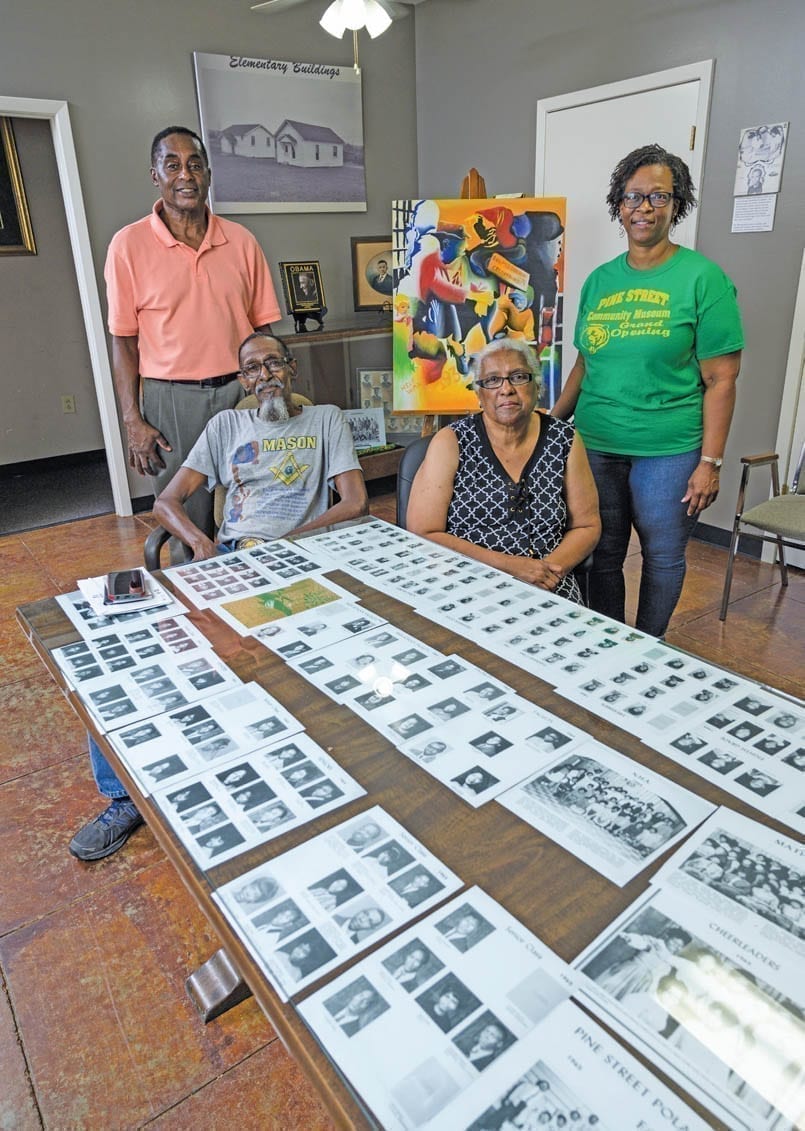20 Aug 2020 CommUnity: African American community documented
Thanks to the new Pine Street CommUnity Museum, the fuller history of Faulkner County and the surrounding area is available to all.
And that is a win for everyone.
The museum, located at 1270 Factory St. in Conway, opened in January. It documents the history of the traditionally African American community in Conway and the Pine Street School as well as the neighborhood’s businesses, churches and families.
According to the Faulkner County Historical Society (faulknerhistory.org), the mission of the museum is to “preserve and honor the legacy of African Americans connected to the Pine Street community inclusive of those living in the community, attending its churches, business owners, and former students and graduates of Pine Street.
“Our vision is to discover, document and display the evolution and history of this community through pictorial displays, artifacts, video and audio interviews, and primary historical documents. Our goal is to make PSCM a historical stop that provides opportunity to examine the contributions of those who lived, were educated, worshipped and worked in the Pine Street community.”
Leona Walton, who attended Pine Street School through sixth grade — when it closed in 1967— is the museum’s board president.

“If we don’t have that history, it’s just forgotten,” she said. “I talked with a home-school person who had no idea there was ever segregation in Conway. I took her and her husband through (the museum), and she’s thinking about bringing her home schoolers on a tour when the pandemic is over.
“They’ve not ever been exposed to it.”
Originally an elementary school, Pine Street graduated its first high school class of nine in 1940. It closed 27 years later when the Conway schools were integrated.
Walton said Black students from places such as Clinton, Menifee, Damascus, Mayflower and Bigelow, among others, attended Pine Street because there wasn’t a high school for them in their hometowns.
“Most of our stuff is pride,” she said, referring to the museum’s artifacts. “We didn’t have a whole lot, but we were proud. We were taught to hold our heads up and look people in the eye because a lot of people thought we were less than them.”
The school colors were green and gold. The mascot was the polar bear.
“I don’t know how we got that name,” Walton said. “I can’t find that information anywhere.”
Among other extracurricular activities, the school offered Chemistry Club, Math Club, Future Homemakers of America, Future Farmers of America, football and basketball for boys and girls.
“Hendrix College let us play football in their stadium,” Walton said. “Hendrix gave us uniforms. Hendrix has always been part of our community.”
The museum features items donated by various individuals, including yearbooks from 1947, ‘48, ‘49, ‘50, ‘51, ‘52, ‘53, ‘55, ‘58, ‘59 and ‘65.
Among other things, Walton said she was looking to add the missing yearbooks for a complete Polar Bear collection.
“I’m always collecting,” she said. “We got some book reports someone had kept from 1965. I have an original football letter jacket, and somebody has promised me their cheerleader uniform.
“We love old newspaper articles about the school. If anybody finds anything like that, I would love to have it.”
For those who aren’t ready to part with their memorabilia, she has scanning equipment to copy the original photos, articles and other artifacts.
“People don’t want to give up their personal stuff, and I understand that,” Walton said. “I’ve asked families to give me something about their family who grew up in the ‘30s and ‘40s.”
The museum building, previously a community policing station, was leased to the group by the City of Conway. “The mayor (Bart Castleberry) and the city have been really, really helpful in helping us get going,” Walton said.
Exhibits are housed in three small rooms that used to be offices. There are also large conference rooms, and Walton said there is room for more exhibits. “I could use display cases if anybody wants to donate some,” she said.
Monetary donations also continue to be accepted.
Going forward, the museum will be a highlight of the biennial Pine Street All-School Reunion, which is held in odd years. Walton said over the years those had drawn as many as 200 attendees from across the country — Detroit, Kansas City, Minnesota, Chicago and California. Pine Street alumni have gone on to successful careers in medicine, academia and business, among other fields, across the country.
“The reunions don’t draw as large a crowd now because we’re older,” Walton said. “Most people, when they left Conway, went north. Not as many locals come, but I think the museum will generate a little interest.”
Walton’s work with the museum is a labor of love.
“We loved our teachers; our teachers loved us,” she said. “They were like family.”
In a video on the Pine Street CommUnity Museum Facebook page, she added: “This is our home…. I just love this neighborhood. None of us had a lot, but together we had enough.”
At the grand opening in January, she summarized the need for such a museum.
“It’s important for the next generation and the generation right now to see what went on in our community back in the ‘30s, ‘40s, the ‘50s and ‘60s. It’s all documented right here at our Pine Street museum.”
To a reporter, she recently said: “People come in there and see themselves in first or second grade or see their grandmother or granddaddy and get tickled.”
At press time, the museum had not resumed regular pre-pandemic hours. Walton said it would be open by appointment for the foreseeable future. For more information, visit the museum’s Facebook page.
- Fits like a glove - December 2, 2025
- Petit Jean: The place for partnerships - December 1, 2025
- Youth of the Month: Emalee Jack Goforth and Bailey Fournier - November 4, 2025








